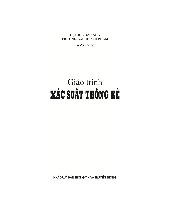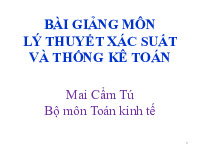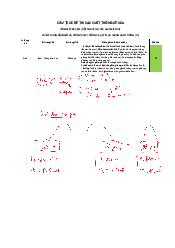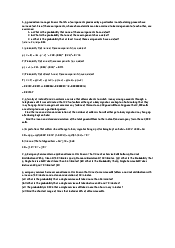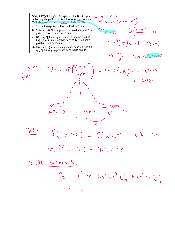






Preview text:
National Economics University ------------------ PELICAN STORE MANAGEMENT REPORT
Name: Nguyễn Thị Minh Ngọc Student ID: 11219614 Class: EPMP7 Ha Noi, October 2022 I. Introduction
Pelican Stores is a nationwide chain of women's clothing stores. They send coupons to potential
new customers at other stores. The purpose of this program is to learn about their customer base,
as well as evaluate the effectiveness of their promotional campaigns.
Payment methods include: using Proprietary Card or using other credit cards (including Visa,
American Express, Discover, MasterCard). Customers who pay with coupons are called
Promotional Customers; Those who do not pay with coupons are Regular Customers.
Below is the overall analysis of the collected data (including 99 samples in all). II. Contents of the report
The report includes 4 main headings: -
Percent frequency distribution for key variables -
Pie chart shows the correlation between customer purchases and method of payment -
Crosstabulation of the correlation between type of customer and net sales -
A scatter diagram shows the link between net sales and customer age
1. Percentage frequency distribution for key variables
To understand the 99 samples collected in Pelican Stores' promotion, we start by analyzing the
distribution table of the percentage of key variables.
As observed in Table 1.1, of the 99 observed samples collected, we found:
• 100% of customers pay by credit card
• The number of people paying by Proprietary Card accounted for 69.7%
• The number of people paying by other cards accounted for 30.3%
Table 1.1: Frequency Distribution Percentage for Payment Methods
For table 1.2, we see: 29.29% of regular customers, the remaining 70.71% are Promotional customers.
Table 1.2: Percentage Frequency Distribution for Customer Classification
Table 1.3 shows that out of 99 purchases, 92.93% were made by women. This is understandable,
as Pelican Stores is aimed at women's fashion.
Table 1.3: Frequency Distribution Percentage for Customer Gender
Table 1.4 shows that 84% of customers are married.
Table 1.4: Percentage Frequency Distribution for Customers' Marital Status
Table 1.5 shows the age distribution of customers. Thereby, we can show that the product is
popular with people aged 30-59.
Table 1.5: Frequency Distribution Percentage for Customer Age
Table 1.6 shows that about 25.54% of customers only buy 1-2 products, the rest buy 3 or more products.
Table 1.6: Frequency Distribution Percentage of Products Purchased
Table 1.7 looks at net sales. Observations show that customers tend to spend between 25.00 and 74.99 on in-store purchases.
Table 1.7: Frequency Distribution Percentage for Net Sales
2. Chart showing the correlation between customer purchases and method of payment
The statistics in Table 2.1 and the pie chart below provide the number of products purchased
corresponding to each payment method. -
Customers paying by Proprietary Card account for the majority with 233 product
purchases, equivalent to 72.59%. -
Of the remaining 4 types of cards, MasterCard and Visa are the two more popular. -
The least used card of the 5 card types is Discover with 2.18%.
Table 2.1: Number of paid products for each payment method
3. Crosstabulation of the correlation between type of customer and net sales
According to table 3.1, the net revenue generated by promotional customers (70%) is much
higher than regular customers (29%). In both customer categories, common net sales range from $25.00 to $74.99.
Table 3 1: Correlation between Customer Classification and Net Revenue
Thereby, we will clearly analyze each type of customer:
Table 3.2: Analysis of indicators of customers in the Promotional Customer group
Table 3.3: Analysis of indicators of customers in the Regular Customer group
Because Pelican Stores is a chain of women's fashion stores, it is clear that sales are higher than
that of the male group. From total product to total net sales, the female group outperformed the
male group. The most obvious is the group of married female customers, the average age is about 42-44.
For male customers, the average purchase age is 54 years old in the promotional customers group
and 30 years old in the Regular customers group.
4. A scatter diagram shows the link between net sales and customer age
Based on the graph and trends in Table 4.1, we conclude that there is no relationship between
customer age and product net sales. However, it can be seen that the highest revenue comes from customers aged 30-50.
Table 4 1: Compare the correlation between customer age and net sales III. Summarization 1. Conclusion -
The promotion campaign was completely successful: Pelican Stores' revenue increased
much (from Promotional Customers) compared to the time when there was no campaign. -
Women are the main customer base of the store. In which, married women (average age
42 - 44) bring in the largest source of net revenue. -
72.59% of customers choose to pay by Proprietary Card, the rest pay by other credit cards.
2. Proposals to strengthen the campaign -
Clearly define customers: Married women, aged 40-50, using Proprietary Card. -
Promote marketing to female customers under 30 years old and over 50 years old
(Affordable price, fashion style…) -
Male customers are still in the minority. Chain stores should launch offers on holidays,
attracting male customers to buy products for their wives, daughters, etc.
